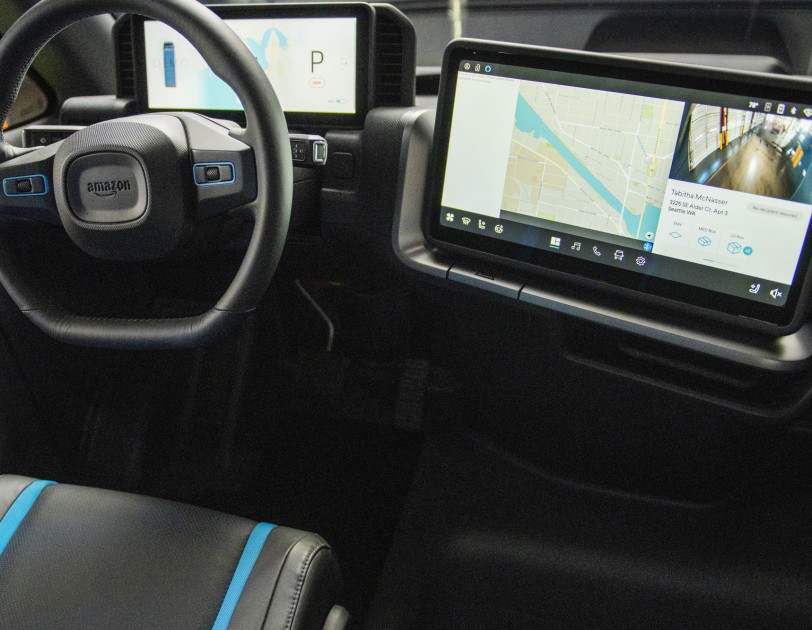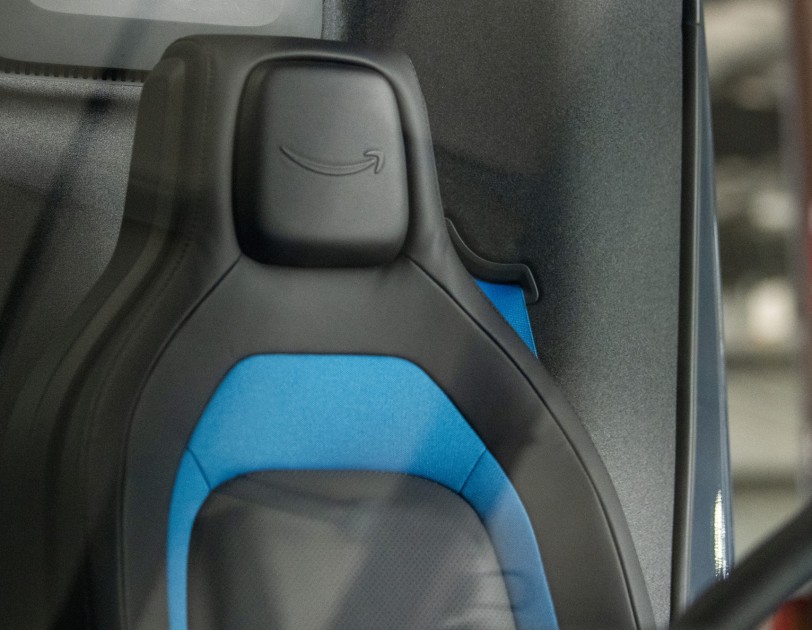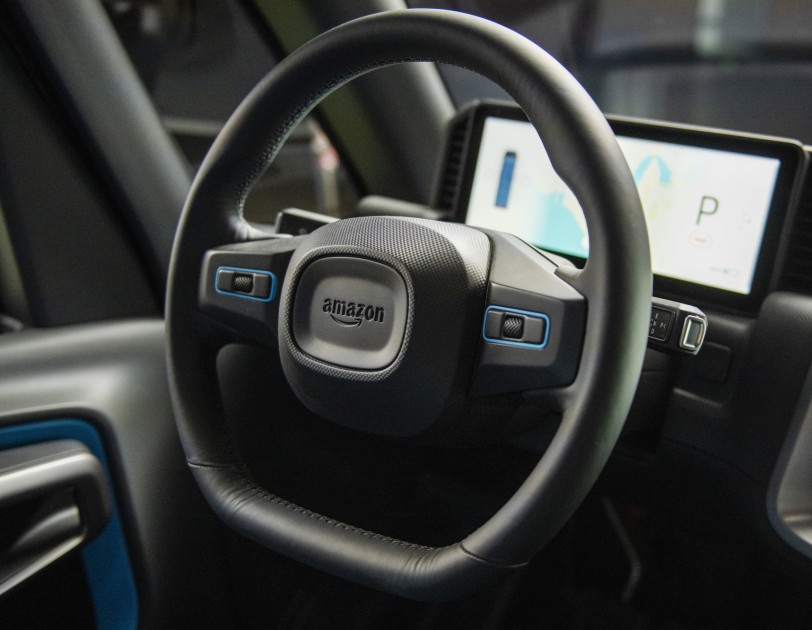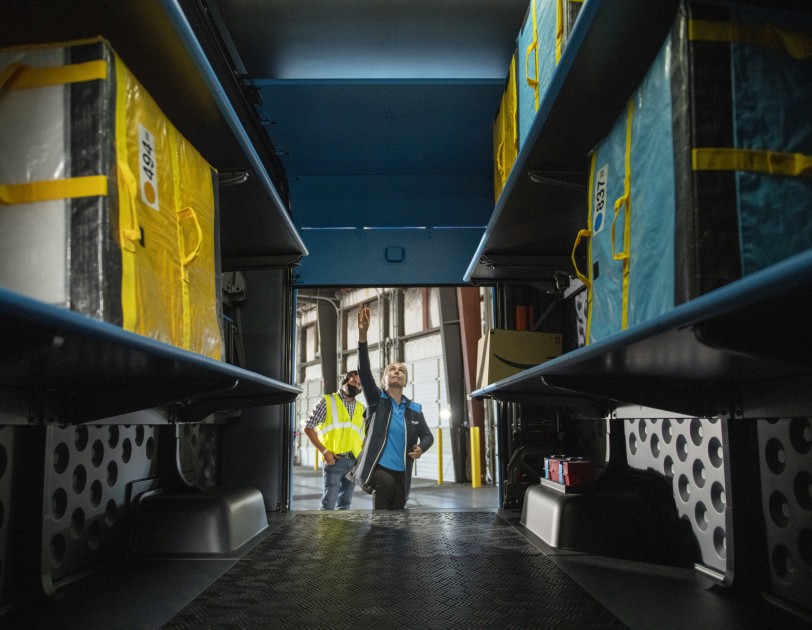As Jeff Bezos frees up more time to count his billions, the company he helped to build and shape over the past 27 years is starting to roll out its first electric delivery trucks as part of broader efforts to cut its carbon footprint.
Built by electric vehicle (EV) startup Rivian, the trucks are making their first deliveries to customers in Los Angeles, with Amazon preparing to bring 10,000 of the emissions-free vehicles to 15 additional cities by 2022.
The EV comes with cutesy LED headlights and a large windshield for better driver visibility. The interior features a couple of touchscreens with maps to show the way and support for Alexa for hands-free operation. The displays also give drivers a 360-degree view of the outside of the truck through cameras placed around its exterior.
Ample storage space comes via three levels of shelving, while a subtle black-and-blue color scheme ensures the truck won’t be the center of attention as it tootles through city neighborhoods.
We first heard about Amazon’s plan to add electric vehicles to its fleet in 2019 when the online shopping giant announced it had led a $700 million funding round in Rivian.
Amazon and Rivian started testing the vehicle four months ago in preparation for the recent L.A. rollout. Additional testing is continuing as the two companies refine the performance and durability according to various climates and geographies around the world, the e-commerce company said.
The current fleet of vehicles was built at Rivian’s base in Plymouth, Michigan, and each one can drive up to 150 miles on a single charge.
The e-commerce company is also adapting its buildings to accommodate the electric vehicles, installing numerous EV charging stations at its delivery sites across North America and Europe.
“We’re loving the enthusiasm from customers so far — from the photos we see online to the car fans who stop our drivers for a firsthand look at the vehicle,” Ross Rachey, director of Amazon’s global fleet and products, said in a release. “From what we’ve seen, this is one of the fastest modern commercial electrification programs, and we’re incredibly proud of that.”
Looking further ahead, Amazon plans to have 100,000 of the vehicles on the road by 2030.






